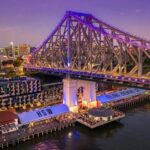Have you been wondering how to organise a pop-up event? Organising a pop-up event requires a well-thought-out approach that blends creativity with strategic planning. Whether you’re aiming to boost brand awareness, launch a new product, or create an engaging experience for your community, the key to success lies in meticulous preparation and attention to detail.
From devising a captivating theme that resonates with your target audience to the logistical intricacies of venue selection and marketing, every step of the process plays a huge role in bringing your vision to life.
We will provide a comprehensive roadmap for orchestrating a memorable pop-up event, ensuring you’re fully equipped to tackle each stage with confidence and flair.
Conceptualising Your Pop-Up Event
Brainstorming the Event Theme
The foundation of a successful pop-up event lies in its theme, which serves as the event’s heartbeat, infusing it with excitement and helping to solidify your brand’s presence in attendees’ minds. A well-conceived theme enhances the experience and fosters a sense of community and innovation. To craft a theme that resonates, you’ll need to understand your audience, including their demographics, values, expectations, and the cultural zeitgeist that may influence them.
Your organisation’s cultural identity and values should be reflected in your event, ensuring that the theme aligns with your brand’s ethos. Moreover, the purpose of the event and its objectives should steer the theme’s development, making sure it conveys the key messages you want to impart. The choice of venue and location also plays an essential role, as these elements can significantly influence the thematic direction of your pop-up event.
Choosing a Target Audience
Determining the right audience for your pop-up event is crucial for achieving your desired outcomes, whether that’s building community, enhancing brand awareness, or driving sales. To pinpoint the most suitable attendees, create detailed personas that encapsulate the characteristics of your ideal participant. Data from previous events can inform this process, allowing for a more nuanced understanding of your target demographic.
The audience you select should align with your event’s overarching goals. By clearly defining who you want to attract, you can tailor your marketing efforts and event content to effectively engage these individuals, ensuring that your pop-up event delivers maximum impact.
Identifying Event Goals
Knowing the ‘why’ behind your event is a fundamental step in planning. This clarity of purpose will act as a compass throughout the design and execution of your pop-up, ensuring that every element aligns with your objectives. The goals you set should inform all aspects of the event, from the theme to the choice of speakers, activities, and even the marketing strategy.
By keeping your objectives at the forefront, you can create a cohesive and focused event that resonates with attendees and achieves your desired results.
Crafting a Unique Selling Proposition
The essence of your pop-up event’s theme should encapsulate your key messages in a simple yet powerful way, creating an immediate connection with your audience. Avoid the temptation to rely on trendy jargon or superficial slogans; instead, aim for authenticity and substance. Your theme should act as a memorable identifier for your event. This concise expression captures the essence of the experience you’re offering.
To stand out, focus on delivering a unique experience that will leave a lasting impression on attendees and reinforce your event strategy. The theme is more than just a tagline; it’s the identity of your event and should be crafted with precision to ensure it resonates deeply with your target audience.

Planning and Coordination
Selecting the Right Date and Time
The success of your pop-up event hinges on choosing the right date and time. This decision can make or break the event, as it affects whether your intended audience can and will want to attend. You’ll need to consider seasonal factors, like holidays, weather, and the general work calendar, to avoid clashing with other big events that might steal your audience’s attention.
It’s best to avoid public holidays and major events unless they’re directly related to the theme of your pop-up. If you pick a date that resonates with your audience, aligning with relevant international celebration days or anniversaries, you’re likely to boost your event’s appeal. Weekdays work better for professional gatherings, while weekends suit consumer-focused events more.
Once you’ve figured out your target demographic’s routine and availability, you’ll need to start promoting as soon as the date is set so potential attendees are in the know and can make plans to attend.
Scouting and Booking a Venue
Your choice of venue is crucial as it not only provides a space for your event but also sets the atmosphere and influences the overall experience. Start by sending out requests for proposals (RFPs) to potential venues, outlining what you need for your event, like space, catering, and tech support. The venue should match your event’s brand, theme, and the profile of your attendees.
Accessibility is vital, including how easy it is for both local and out-of-town guests to get there. You’ll need to be clear on what the venue’s package includes, especially when it comes to food and drink. Ensure you have good lines of communication with the venue staff and know who your main onsite contact is to keep things running smoothly.
Use a checklist to ensure that a venue meets your needs and that you’re making a well-informed choice.
Arranging Vendors and Supplies
Now, you’ll need to focus on vendors and supplies. Do your homework and choose vendors that meet the standards and needs of your event, whether it’s for A/V equipment, catering that considers various dietary needs, or decor like plants and flowers. Think about parking and transport for your guests, and if you’re serving alcohol, make sure you’re following the law.
For events that need extra infrastructure, like stages or tents, contact the necessary authorities, such as the fire marshal, to make sure everything’s up to code. Organise your staffing, including ushers and crowd control, book entertainment, and arrange sound checks if needed. And don’t overlook the small stuff, like having enough bins around to keep the place tidy.
Creating a Detailed Timeline
A well-thought-out timeline and run sheet is key to executing your pop-up event without a hitch. Begin with a long-term planning timeline to keep track of everything and ensure tasks are done well before the big day. This timeline should list all the steps you need to take in order, including important deadlines set by stakeholders and partners.
Work in the timelines from your vendors, considering how long they’ll need and if other events at the venue could affect your schedule. Draft your timeline a few times, leaving room to adjust if things don’t go as planned. Add some buffer time to deal with any surprises.
Your timeline should cover all the bases, from assigning roles and setting goals to picking vendors, planning your marketing, and confirming speakers. Draw up an hour-by-hour schedule for the event day and share it with your key volunteers and vendors to ensure everyone knows what they’re doing and when.

Legal and Administrative Tasks
Obtaining Necessary Permits
Securing the appropriate permits is crucial when planning a pop-up event. It ensures compliance with local laws. Events that attract 50 or more attendees per day, whether in a city facility or impacting public spaces such as streets or walkways, typically require a special event permit.
The application process for these permits is time-sensitive. Late submissions might result in denial. If your event involves a temporary change of use for a property—like transforming a retail space into a venue for public assembly—a temporary change of use permit is mandatory.
You’ll need to be aware of the specific requirements for your event type. These can vary significantly depending on the nature and scale of the event.
Insurance Needs for Event Safety
Insurance is a key component of event planning. It provides protection against potential financial liabilities. Special event insurance offers liability coverage for various claims related to the organisation or participation in an event. Security at events is advisable.
General liability insurance can protect against damage to the rented premises or attendees’ property. If alcohol is served, liquor liability insurance is crucial to cover damages from alcohol-related incidents. Professional liability insurance, also known as errors and omissions insurance, is advisable for professionals to protect against claims of financial loss due to alleged inadequate performance.
Event cancellation insurance is another important consideration. It protects against revenue loss from unforeseen circumstances such as extreme weather, power failures, or performance issues. Workers’ compensation insurance is often a legal requirement for events with staff, covering employees for injuries incurred on the job.
Contracting with Vendors
Engaging with vendors is a typical aspect of pop-up events. It requires clear contractual agreements. An event vendor contract outlines the vendors’ conditions, roles, and responsibilities.
It’s vital to prominently include the names of the vendors and the hiring company in the contract. This ensures that the terms, responsibilities, and ground rules are articulated clearly and concisely. Vendor contracts, also known as vendor agreements, define the business relationship, detailing the delivery of goods or services, payment schedules, and contract duration.
They also specify the consequences for either party failing to meet their contractual obligations. When drafting these contracts, it’s important to consider all aspects of the exchange to ensure a smooth and successful collaboration.
Understanding Local Regulations
Being familiar with local regulations is indispensable for event organisers. Regulations can dictate the need for various permits. For example, those for food service require a temporary food event permit, especially when food is offered to the public from mobile units like food trucks.
These mobile vendors are often subject to fire inspections. Additional permits might be needed for vending in certain public rights-of-way. Organising events in parks may introduce additional permit requirements for activities such as alcohol consumption, food sales, and the use of temporary structures like tents or bounce houses.
Events involving alcohol or requiring public safety services, medical support, or the use of public spaces for activities such as runs or walks necessitate a more comprehensive application process. You’ll need to plan well in advance—often six months to a year—to ensure all necessary arrangements are in place for a safe and compliant event.
Marketing and Promotion
Developing a Promotional Plan
A robust promotional plan is essential for the success of your pop-up event. It should be attuned to the customer’s needs, leave a lasting impression, and encourage sales. Establish a strong brand identity for your pop-up, which will guide your marketing initiatives.
Identify the most effective channels to publicise your event, selecting those that will connect with your intended audience. It’s important to track the effectiveness of your promotional activities and refine your approach to optimise both investment and revenue.
The aim is to convey the urgency and exclusivity of your pop-up event, prompting potential customers to act swiftly in engaging with your brand.
Utilising Social Media Effectively
Social media platforms are an economical yet potent means to extend your pop-up event’s exposure. With their extensive user bases, platforms such as Facebook, Instagram, Twitter, and LinkedIn allow for precise targeting based on demographics and interests. Develop content that generates excitement, including countdowns, teasers, and real-time updates.
Incorporate hashtags to broaden your event’s visibility and inspire attendees to share their experiences. Reply to comments and messages to interact with your audience, and employ analytics tools to monitor engagement and refine your promotional methods.
By actively promoting your event on social media, you can generate enthusiasm that may increase attendance and enhance brand recognition.
Engaging Influencers and Collaborations
Influencers can significantly increase your pop-up event’s profile. Collaborate with local influencers and personalities who align with your audience to establish genuine connections. Micro-influencers can be particularly effective due to their dedicated followers.
Create an environment that influencers will be eager to share with their audience, potentially driving their followers to your event. Evaluate their community interaction to ensure they can make a meaningful contribution.
Encourage influencers to share their experiences and utilise social media tools to facilitate collaboration and content distribution.
Crafting Eye-Catching Promotional Materials
The visual design of your promotional materials can greatly influence the draw of your pop-up event. Produce materials that reflect your brand and the distinct experience your event promises. From digital graphics to print flyers, maintain uniformity in your branding and communication.
Involve your audience with interactive elements, such as quizzes and competitions, and offer content that can be easily shared across different channels. Producing visually appealing and compelling promotional materials can attract potential attendees to your pop-up event.

Execution and Onsite Management
Setting Up the Venue
Creating an impactful first impression as attendees enter your pop-up event is essential. The venue must be arranged to mirror the event’s theme and support a fluid attendee experience. This involves organising the space to manage guests’ movement, which may include the strategic placement of furniture and lighting that enhances the event’s ambience.
Incorporating audiovisual elements like projectors and sound systems can elevate the atmosphere and captivate your visitors. Ensuring a stable Wi-Fi connection is also critical, as it underpins various functionalities, from transaction processing to social media engagement.
Coordination Team Roles and Responsibilities
A cohesive team is vital for the smooth operation of your pop-up event. Each team member should be well-versed in their specific duties to oversee different aspects of the event effectively. Responsibilities may encompass supervising the setup, managing technology, and, if applicable, overseeing catering services.
Team members must also excel in attendee interaction. The coordination team should be prepared to address any challenges promptly. Consistent communication among team members is essential to maintain alignment with the event’s objectives.
Managing Event Flow and Timing
The rhythm and cadence of a pop-up event are pivotal to its success. Organisers must meticulously plan the event’s itinerary to optimise engagement while preventing congestion or excessive wait times. This includes scheduling for key moments, such as product reveals or participatory activities.
Event management software can help manage these components, ensuring a consistent experience for attendees. Organisers should also design an environment that invites guests to linger and engage, potentially leading to greater interest and sales.
Post-Event Breakdown and Cleanup
After the event concludes, the dismantling and cleaning process must be executed precisely and carefully. The venue should be restored to its original state, which includes proper waste disposal and the removal of any temporary structures.
Capturing the event on video can amplify its reach, allowing the experience to resonate with those who could not attend. Gathering data on participant numbers and interactions will inform future planning and enable continuous improvement of event strategies.
Ready for the Big Day
With meticulous planning, a dash of creativity, and a steadfast focus on detail, you’re now poised to launch an enthralling pop-up event that is bound to linger in the memories of your guests. From securing a buzz-worthy theme to ensuring smooth operations on the day, every step you’ve taken has been a stride towards manifesting an immersive, brand-centric experience.
Remember, flexibility paired with thorough preparation is the key to a seamless event. Stay adaptable, expect the unexpected, and be ready to pivot if necessary. As you wrap up the final preparations and look forward to welcoming your attendees, be confident in the knowledge that you’ve crafted an event that not only meets the expectations but exceeds them, leaving an indelible mark on your brand’s journey.
Now, take a deep breath. It’s showtime.







